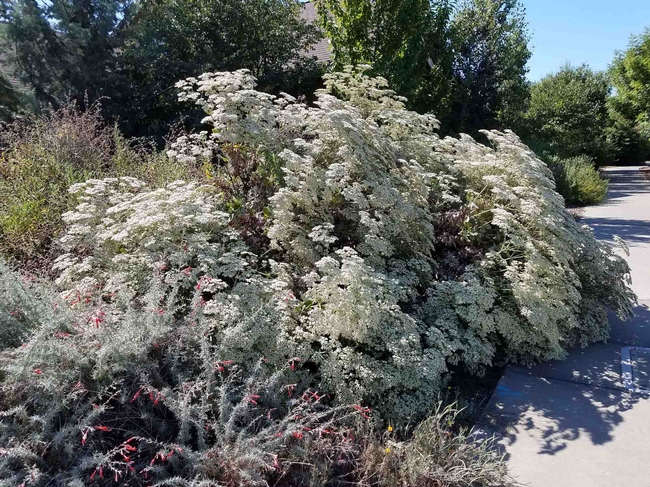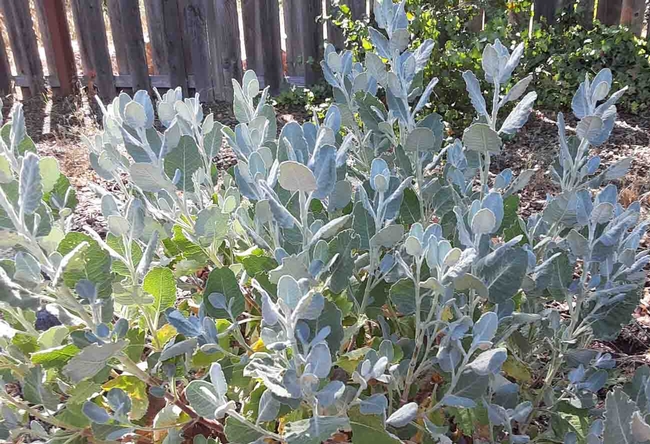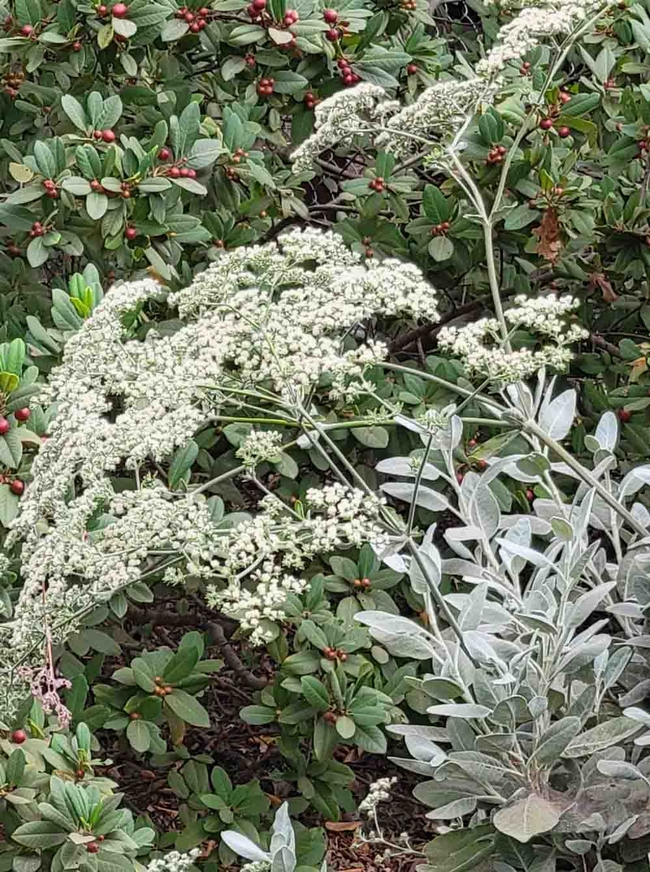An astounding number of species populate the wild buckwheat genus Eriogonum - over 250, according to the CALFLORA website. And, due to their propensity to hybridize, active speciation continues as we speak. There are species for almost every letter of the alphabet, from A (E. abertianum) to Z (E. zionis). This article will discuss characteristics common to all of the wild buckwheats, and then focus on a landscape beauty, E. giganteum, known familiarly as St. Catherine's Lace or giant buckwheat.

And the last bit of fun with words involves etymology. The Latin genus name Eriogonum was bestowed by French botanist and explorer André Michaux, who traveled to the United States in 1785 to find plants that could be taken back to France for use in carpentry, medicine, and agriculture. During his botanical explorations in the Southeastern US, he came upon a wooly plant with sharply bent stems and christened it Eriogonum tomentosum (common name dogtongue wild buckwheat). Eriogonum translates from the Greek as “wooly knees” (erion = wool and gona = knee or joint).; tomentosum translates from the Latin as densely matted or hairy, a descriptor originally used for plants that were used to stuff mattresses or pillows.
Wild buckwheats have mastered the art of thriving in the multiple challenging environments found in California. In a 2013 article for Pacific Horticulture, local garden guru Jennifer Jewell notes that these hardy dryland natives “thrive in exposed locations on slim soils” and “are at their best in lean, well-draining soil and full sun.” She quotes international buckwheat expert Dr. James Reveal, who marvels at this plant's ability to inhabit any ecological habitat, from “the seashore to the highest mountains in the United States.” He adds that, “They are among the last plants seen atop the Sierra Nevada and on the ‘outskirts' of Badwater in Death Valley.”

Species Focus - Eriogonum giganteum
St. Catherine's Lace is one of the many buckwheat species that provide food to a wide variety of pollinators; it is also a beautiful landscape plant, especially for larger spaces. Its species name, giganteum, reveals its claim to fame; this is the largest of all the wild buckwheats, with the ability to grow up to ten feet high and wide. It prefers fast-draining rocky soil but will tolerate heavier clay soils if seldom watered and can also handle alkaline conditions. Although this species is native to California's Channel Islands, it easily adapts to summer temperatures in the Valley, and will withstand winter lows of 15 to 25 degrees F.

The leathery, woolly, oval-shaped leaves are large relative to other wild buckwheat species and range from a grayish green to silver. Occasional summer water will keep this buckwheat evergreen, but in the wild, plants will drop a portion of their leaves as a drought survival strategy.
Endemic to the Channel Islands of Southern California, St. Catherine's Lace naturally populates Coastal sage and chaparral ecoregions. Three distinct species have developed on three of the eight Channel Islands: Santa Barbara Island buckwheat (var. compactum); San Clemente Island buckwheat (var. formosum); and Santa Catalina Island buckwheat (var. giganteum).
As an ornamental landscape plant, it is at its best in native plant, drought tolerant, and wildlife gardens, and when a natural garden design is desired. Its size, form, and texture make it a good choice for background planting, or to fill and soften a bare corner in the yard. The UC Davis Arboretum classifies E. giganteum as one of its "All-Stars," a testament to this plant's aesthetic value and endurance in our hot, dry landscape, and its service to native pollinators and other wildlife.
Each of the 256species in the genus Eriogonum offers its own version of habitat value and native beauty. Visit the CALFLORA website to view detailed photos of each of the wild buckwheats and decide which is your favorite.
For more information:
Jennifer Jewell, “Beneficial Buckwheats,” Pacific Horticulture Newsletter, April 2013
UC Master Gardeners of Butte County are part of the University of California Cooperative Extension (UCCE) system. To learn more about us and our upcoming events, and for help with gardening in our area, visit our website. If you have a gardening question or problem, email the Hotline at mgbutte@ucanr.edu or leave a phone message on our Hotline at (530) 538-7201. To speak to a Master Gardener about a gardening issue, or to drop by the MG office during Hotline hours, see the most current information on our Ask Us Hotline webpage.